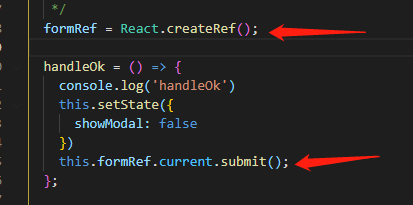可以将文章内容翻译成中文,广告屏蔽插件可能会导致该功能失效(如失效,请关闭广告屏蔽插件后再试):
问题:
I'm trying to Automate a web application selenium 2.0 [webdriver+java].The web application is currently deployed in our UAT servers on our local network.My test cases are executing, but I have to manually enter the Proxy Authentication details for my Chrome instance at the start of the test execution. I have tried all the solutions provided on stack overflow but still, the authentication message pops out.

This is the code I'm using in my driver initializing process
package com.misyn.ess.ui;
import java.util.Arrays;
import org.openqa.selenium.Proxy;
import org.openqa.selenium.WebDriver;
import org.openqa.selenium.chrome.ChromeDriver;
import org.openqa.selenium.chrome.ChromeOptions;
import org.openqa.selenium.remote.DesiredCapabilities;
/**
*
* @author User
*/
public class DriverClass {
private String baseUrl;
private String driverPath;
private String driverName;
private static WebDriver driver;
private static DriverClass driverClass;
private DriverClass() {
try {
baseUrl = "http://192.168.0.10:8282/ess";
driverPath = "E:\\Work_Folder\\SelTools\\chromedriver.exe";
driverName = "webdriver.chrome.driver";
//Set the location of the ChromeDriver
System.setProperty(driverName, driverPath);
//Create a new desired capability
DesiredCapabilities capabilities = DesiredCapabilities.chrome();
// Create a new proxy object and set the proxy
Proxy proxy = new Proxy();
proxy.setHttpProxy("192.168.0.200:3128");
proxy.setSocksUsername("avishka");
proxy.setSocksPassword("12345678");
//Add the proxy to our capabilities
capabilities.setCapability("proxy", proxy);
//Start a new ChromeDriver using the capabilities object we created and added the proxy to
driver = new ChromeDriver(capabilities);
//Navigation to a url and a look at the traffic logged in fiddler
driver.navigate().to(baseUrl);
// System.setProperty(driverName, driverPath);
// driver = new ChromeDriver();
// driver.get(baseUrl);
} catch (Exception e) {
e.printStackTrace();
}
}
}
Can anyone give me a solution how to give this proxy username and password thing from the application itself than manually entering details on the pop-up(Authentication), any help would be much appreciated.Thanks
the currently answered one is only for
As of Selenium 3.4 it is still in beta
Right now implementation is only done for InternetExplorerDriver
Where I'm using selenium 3.0 and Google Chrome as my web browser.
回答1:
You can do via MultiPass for HTTP basic authentication
Download the extension from
https://chrome.google.com/webstore/detail/multipass-for-http-basic/enhldmjbphoeibbpdhmjkchohnidgnah
Download the extension as crx. You can get it as crx from chrome-extension-downloader
After that the config is simple.
import java.io.File;
import org.openqa.selenium.By;
import org.openqa.selenium.WebDriver;
import org.openqa.selenium.chrome.ChromeDriver;
import org.openqa.selenium.chrome.ChromeOptions;
/**
*
* @author Phystem
*/
public class ChromeAuthTest {
WebDriver driver;
public ChromeAuthTest() {
System.setProperty("webdriver.chrome.driver", "chromedriver.exe");
}
private void initDriver() {
ChromeOptions cOptions = new ChromeOptions();
cOptions.addExtensions(new File("MultiPass-for-HTTP-basic-authentication_v.crx"));
driver = new ChromeDriver(cOptions);
configureAuth(
"https://the-internet.herokuapp.com/basic_auth",
"admin",
"admin");
}
private void configureAuth(String url, String username, String password) {
driver.get("chrome-extension://enhldmjbphoeibbpdhmjkchohnidgnah/options.html");
driver.findElement(By.id("url")).sendKeys(url);
driver.findElement(By.id("username")).sendKeys(username);
driver.findElement(By.id("password")).sendKeys(password);
driver.findElement(By.className("credential-form-submit")).click();
}
public void doTest() {
initDriver();
driver.get("https://the-internet.herokuapp.com/basic_auth");
System.out.println(driver.getTitle());
driver.quit();
}
public static void main(String[] args) {
new ChromeAuthTest().doTest();
}
}
I have used a sample site for testing.
Provide your url,username and password in the configure Auth function and try
回答2:
This code (from Avishka Perera's answer) does not work for me:
proxy.setSocksUsername("avishka");
proxy.setSocksPassword("12345678");
The username and password set in this way do not take effect for the http/https proxy - the Proxy Authentication box still popped up.
I'm using Selenium java 3.141.0, ChromeDriver 2.33 and chrome 70. What works for me is to follow Mike's answer here Selenium using Python: enter/provide http proxy password for firefox .
Create the zip file, then add the extension like this:
ChromeOptions chromeOptions = new ChromeOptions();
chromeOptions.addExtensions(new File("src/test/resources/proxy.zip"));
WebDriver driver = new ChromeDriver(chromeOptions);
One catch is that the above code will run into error if you set "--headless" argument because chrome in headless mode cannot have extension (Is it possible to run Google Chrome in headless mode with extensions?). If your Chrome runs in Docker container and cannot show the UI, then to get this solution work, you'll need to run with Xvfb instead of in headless mode.
回答3:
public class DriverClass {
private String baseUrl;
private String driverPath;
private String driverName;
private static WebDriver driver;
private static DriverClass driverClass;
public DriverClass() {
try {
baseUrl = "http://192.168.0.10:8282/ess";
driverPath = "E:\\Work_Folder\\SelTools\\chromedriver.exe";
driverName = "webdriver.chrome.driver";
System.setProperty(driverName, driverPath);
Proxy proxy = new org.openqa.selenium.Proxy();
proxy.setSslProxy("192.168.0.200" + ":" + 3128);
proxy.setFtpProxy("192.168.0.200" + ":" + 3128);
proxy.setSocksUsername("avishka");
proxy.setSocksPassword("12345678");
DesiredCapabilities desiredCapabilities = DesiredCapabilities.chrome();
desiredCapabilities.setCapability(CapabilityType.PROXY, proxy);
driver = new ChromeDriver(desiredCapabilities);
driver.get(baseUrl);
} catch (Exception e) {
e.printStackTrace();
}
}
}
The proxy setting has been added with desired capabilities to pass values to proxy authentication,worked finally
回答4:
The approach that worked perfectly fine for me is by using AutoIT.
Install autoIT and prepare a simple script as shown in the picture attached and execute the script file from your testscript using Runtime.getRuntime().exec("\YOUR_SCRIPT.exe") before navigating to the baseURL.
回答5:
Simple method to add authenticated proxy using selenium wire in Both firefox and chrome
In python
Step:1
pip3 install selenium-wire
Step:2
from seleniumwire import webdriver
from selenium import webdriver
step:3
Add proxy in below-mensioned format
proxy= "username:password@ip:port"
options = {'proxy': {'http': proxy, 'https': proxy, 'no_proxy': 'localhost,127.0.0.1,dev_server:8080'}}
step:4
pass proxy as an argument
CHROME
driver = webdriver.Chrome(options=chrome_options, executable_path="path of chrome driver", seleniumwire_options=options)
Firefox
driver = webdriver.Firefox(seleniumwire_options=options, executable_path="path of firefox driver", options=firefox_options)
step:5
Verify proxy applied by requesting the url https://whatismyipaddress.com/
time.sleep(20)
driver.get("https://whatismyipaddress.com/")
Note:
But selenium log shows it runs in without proxy because we are using an external package to apply proxy.






